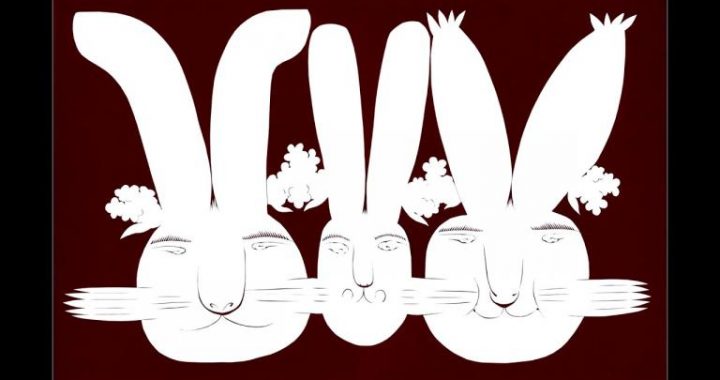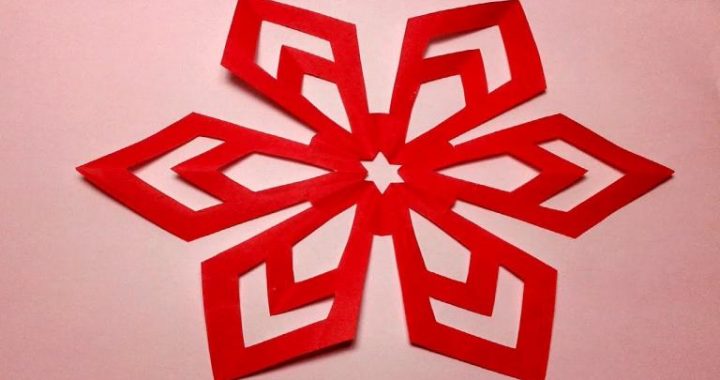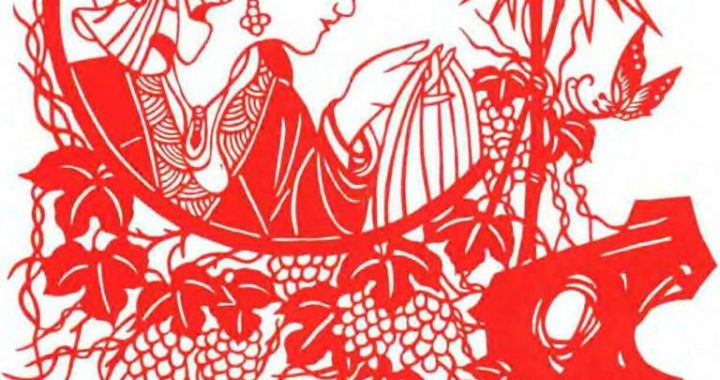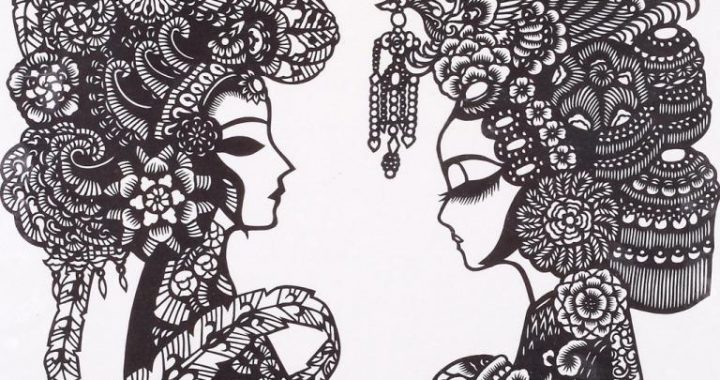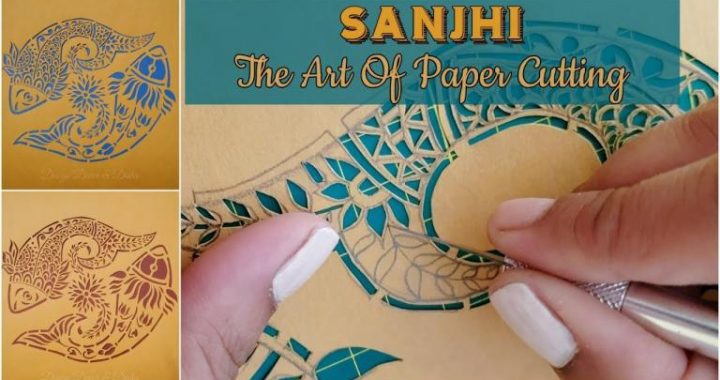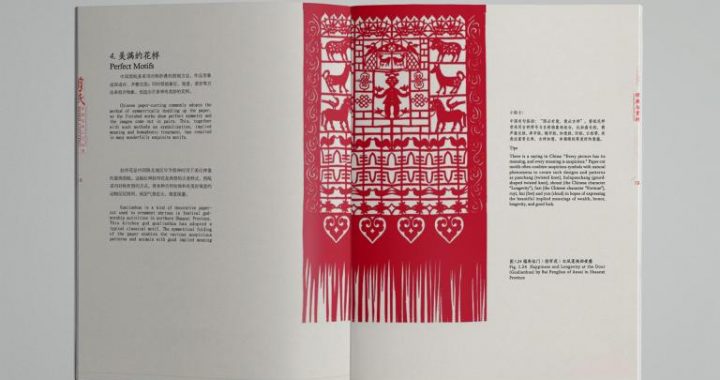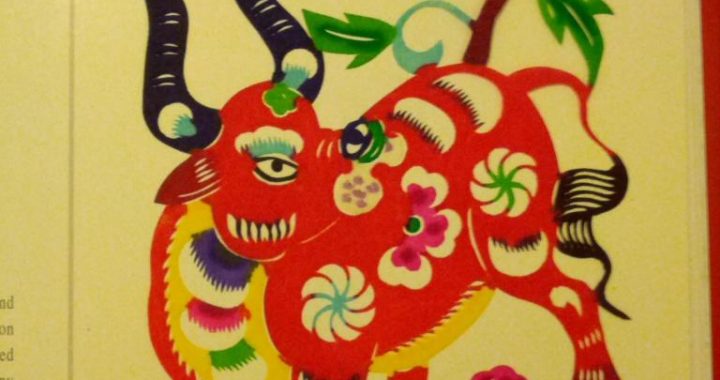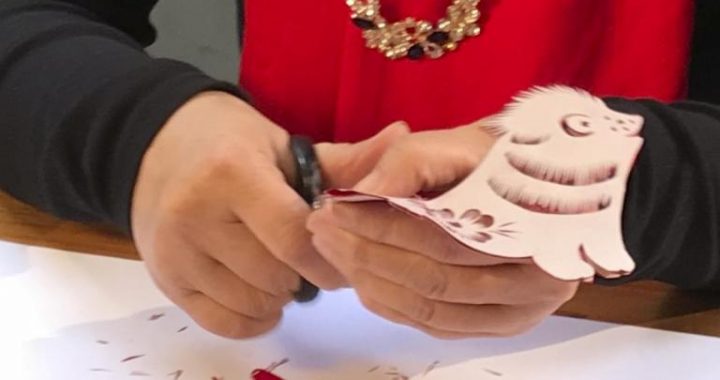Chinese folk art
8 min readThe art form of Chinese folk art is the visual image of the objects in the universe, according to the original Chinese philosophy.
In primitive society, human was on the weak side in the struggle against natural disasters. Animals with superman capability became supernatural or totem animals in the eyes of humans, for example, polygenetic animals like fish, toad and frog were regarded as female totem symbols from mother’s body of earth and water. Animals that were difficult to conquer such as snake, tiger, ox, boar, bear, or with special capability such as flying birds and butterflies, or that ran fast on mountain peaks and precipices like antelope, were male totem symbols, same as the sky and the sun. Over the course of several thousand years, these symbols have been, and still are, used by people of various national background and geographical areas in their respective regional folk art.
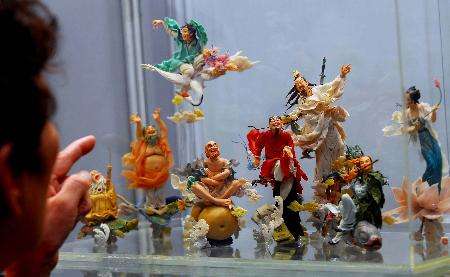
A totem coiled snake on painted pottery unearthed from Taosi cultural relics(dated back 5,000 years) in Xiangfen, Shanxi, along middle-to-upper reaches of the Yellow River.
Folk paper-cut’Snake twining round a rabbit'(Ansai, Shaanxi), middle-to-upper reaches of the Yellow River.
Floury flower of “Wonton'(chaos)totem snake in Shilou, Shanxi, middle-to-upper reaches of the Yellow River.
In the prairie areas of northern China, the deer totem symbol worshipped by the people in remote antiquity is still a symbol in today’s folk art of the prairie culture; and the pig and the dragon totem from Hongshan Culture originated in primitive society in Liaohe River basin are still feature symbols in the folk art of the region. The turtle, the snake, the fish and the frog totem from Yangshao Culture along the middle-upper stream of the Yellow River were worshipped by the emperor tribe who idolized earth and land. East of Gansu to central Shaanxi plain, Fuxi, Yan Di and ancient Qiang ethnic group tribes worshipped tiger, ox and goat which were regarded as the same type of symbols as the sky and the sun. Lower stream of the Yangtze River was the region for Hemudu Culture and Ancient Yue tribal culture that worshipped the bird totem. Going north into Shangdong Province was also the bird totem from Dawenkou Culture and Longshan Culture; and mid-stream Yangtze River Chiyou Miao-Li tribal group was known for their ox totem in connection with the sky and the sun. The same went all the way to the upper stream of the Yangtze River. Regional totem symbols still prevail in today’s folk art.
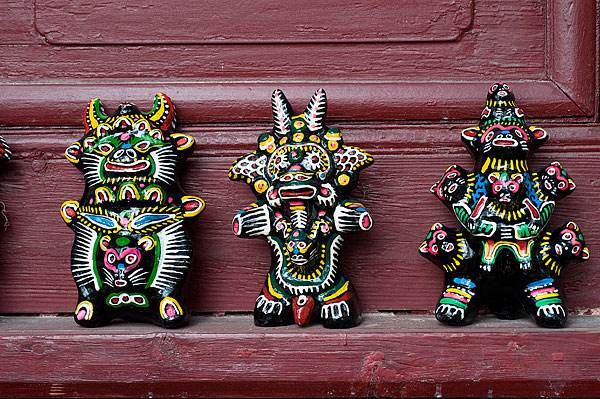
One carving of tiger face totem from Yangshao Culture (dated back 6,000 years, kept at the Shaanxi Historical Museum).
In ancient China, people connected natural animals with sky and earth, and with the theory of yin-yang. Animals in the yang group symbolized the sky and the sun.
The unification of “yang” animal from the sky with “yin”animals of earth meant a connection of the sky and earth, or the unity of yin-yang. Among Chinese totem animals and legendary animals, the tiger, the ox, the goat, the bird, the bear, the boar, the dog and the rooster were of the sky and yang group; the dragon, the snake, the turtle, the fish and the frog were yin group and symbols of earth and water. The dragon, with his head on earth but mating in heaven, was a totem of both worlds.
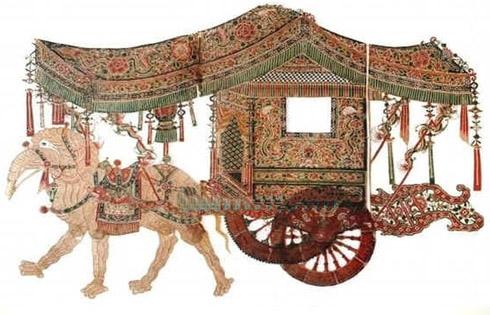
Dragon was originally an animal of earth and water, but later went to heaven to become the king, and phoenix, an animal in heaven was the queen.) This is rather unique. For example, dragon, being an earth and water totem symbol, later became a cultural symbol of the entire nation in the confluence of multiple national cultures.
People integrated the dragon into their own totem animal which turned into the dragon with a boar head in Liaohe River basin; or the dragon with a tiger head in the middle-upper stream of the Yellow River the dragon with a bird head in middle-lower stream of the Yellow River and the Yangtze River; and the dragon with an ox head in middle-upper stream of the Yangtze River. It is also quite common to see”fish with a tiger head”or “fish with a rooster head” in Chinese folk art. When two animals are combined into one, it was a cultural symbol that heaven and earth connect, male and female mate. Other example like “rooster holding fish in the mouth”and “bird holding a fish in the mouth”also implied the connection of heaven and earth, yin and yang. It was a cultural code originated in the communal philosophy in primitive soclety.
Tiger totem cap, shoes and pillow for babies(Linyi, Shandong).
A hanging dish of tiger face totem as Patron Saint(Fengxiang, Shaanxi).
Birds playing around with fish in the mouth on painted pottery from Yangshao culture (dated back 6,000 years) unearth from Beishouling, Baoji, Shaanxi Another symbol in Chinese folk art was a pair of animals on each side of the tree of life. This was a common design in silk weaving pictures from the Silk Road. In the Ancient Babylon culture of primitive society, a tree meant the tree of life, and it was guarded by the two animals, one on each side. However, when such totem was introduced to China, the two animals from the opposite side were given a philosophical nature as yin and yang, male and female. The totem symbols in Chinese primitive society were the paired fish, toads snakes, tigers, deer and birds, all paired up as male and female, yin and yang, or animals of earth and the sky.
‘A bird with fish in the mouth’ on painted pottery from Yangshao culture unearthed from Linru, Henan.
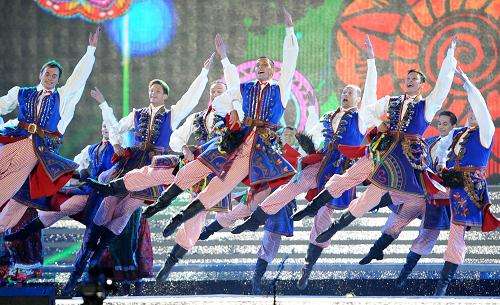
Sketches of”A bird with fish in the mouth’ from the Shang Dynasty, unearthed from Yinxu, Henan.
Stone painting of a bird with fish in the mouth from a Han tomb.
Painted pottery of “A bird with fish in the mouth”from the Han Dynasty.
Rotating sketches of birds with fish in the mouth on painted pottery from the Han Dynasty.
The planetary paired fish, toads, deer, goats and birds revolving in the sky in primitive and folk art are philosophical symbols which unified in the theory of yin-yang and perpetual life. Such philosophical and cultural implications were revealed in folk art designs in which two totem animals facing each other, with a symbolic sun up above in the middle, such as “Two dragons playing with a ball, “Two phoenixes facing toward the sun, “or with a symbol of life in the middle in “The tree of life and a pair of deer, “The tree of life with a pair of goats,”or “The tree of life with a pair of monkeys, etc.
Embroidery costume ‘Dragon with an ox head” (Two dragons playing a pearl)(Taijiang, Guizhou).
Paper-cut for window flower-‘A fish with a rooster head” (Ansai, Shaanxi) Paper-cut for window flower-“A bird with fish in the mouth”(Shaanxi).
The pattern of two animals revolving in opposite directions implies the revolution of the universe and continuation of life. Common patterns are rotating fish in pairs, triples or quadruples; or rotating birds. Sometimes, the fish or the revolving fish are painted on the bottom or the lower part of a dish, a metaphor for mother’s body of the universe, to symbolize the revolution of earth; or on the upper portion or the edge of the utensils, to symbolize the revolution of the sky.

Among the legendary animals, proliferous animal was regarded as god of propagation, such as rat. As a folk proverb goes, rat being “the smallest in size, but the biggest among the twelve animals of earthly branches. “Cultural symbols implying proliferation are shown in”Rat eating pumpkin,””Rat eating grape”and”Rat stealing oil” (oil container as mother’s body for propagation). Theme paper-cut and woodcut New Year picture “Rat marry off a daughter,”came from the legend that the rat, god of propagation, marries off a daughter every year on “The Human Day,” the 7th of first lunar month. Rabbit, also proliferous, is another god of propagation in “Rabbit eating cabbage,””Rabbit coiled by snake,” an image of totem snake protecting and nurturing the newborns.
Insects with arms and legs spreading out from the center body are visual images of the sun in Chinese folk art works, such as crab, spider, scorpion, beetle, centipede, etc. They were originally symbols of the sun in ancient Egypt and ancient Babylon, and made its way to China via the Silk Road as early as primitive time. In west China along the Silk Road, eastern Gansu and central Shaanxi plain area, every year on the Dragon Boat Festival, people still wear these animal figures on their vests, tan tops and hand bags as talismans, or symbols of patron saint. People call them five poisonous creatures nowadays, but they were actually old time legendary animals regarded as the sun god. The “Five poisonous creaturesare not supposed to get on body wear;however, it is acceptable to wear them in the chest or on the back for safeguard. One of the toughest two periods for Chinese to survive against natural environment is, for one, the Summer Solstice (Late June in the Gregorian calendar), the longest day in a year and in the dead heat of season, with pestilence running rampant, threatening human lives. To invite these little sun animals out and wear them as talismans is to use poison as an antidote against poison. The winter Solstice (late December in the Gregorian calendar) is the coldest day and longest night in a year, a time ghosts and spirits run around. It is custom to put out symbols of rooster, another sun god, homophonic with “Double chicks”and “Baby with coiled hair” with double coils and a rooster on each; or having roosters all over her body; to keep away ghosts and evil spirits. This is also originated in the primitive culture along the two Babylon rivers. In ancient times, it went west to Europe, and east to China. When mingled with Chinese culture, it became a symbol of the communal culture in Chinese folk art ever since.
Pillow showing fish with a tiger head (Jishan, Shanxi).
Embroidery curtain ‘Dragon with a phoenix head”(Two dragons playing a pearl)(Songtao, Guizhou).
Sketches of pair of revolving fish on painted pottery from Yangshao Culture, Banpo (dated back 6,000 years).
‘Revolving birds and fish’ on white porcelain basin from the Liao Dynasty (dated back 1,000 years).
‘Three revolving fish’ on blue and white porcelain bowl (Chengxian County, Shaanxi).
